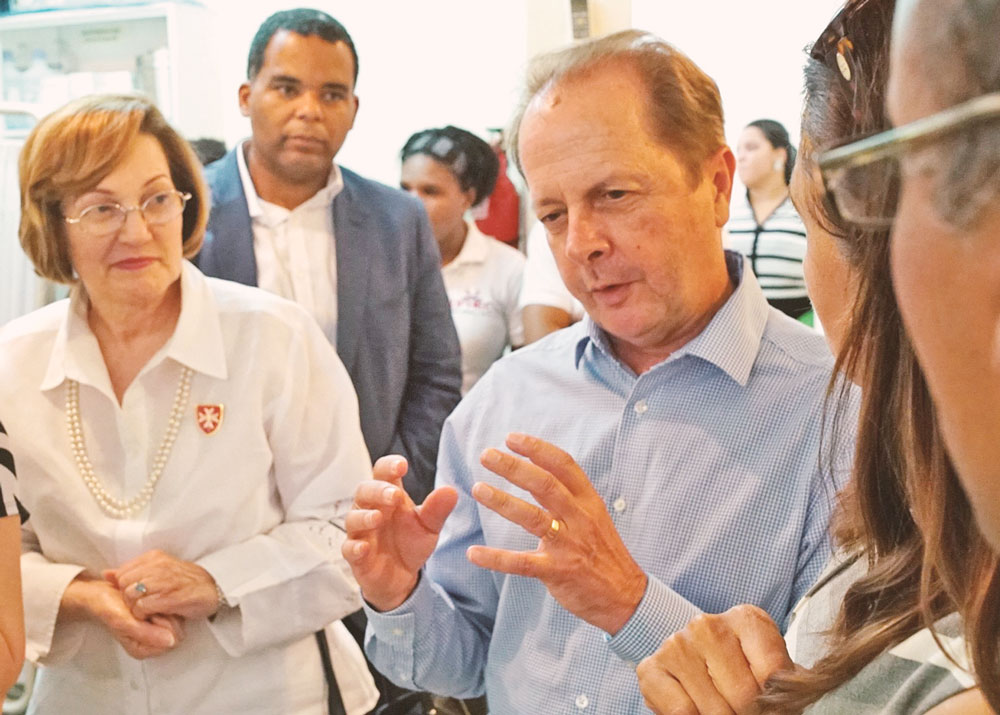New Leaders at the Helm of Project HOPE

by Dulcy Hooper
The past few months have been a time of transition for Project HOPE. Headquartered in Millwood, the organization was founded in 1958 and is identifiable to many as the SS HOPE, the world’s first peacetime hospital ship.
Dr. Tom Kenyon joined HOPE as the organization’s new President and CEO last fall, following a lengthy search by HOPE’s national board of directors. And in February, Franklin Guerrero was selected as vice president of development and communications.
“Franklin’s experience in international development and nonprofit management was a perfect match for HOPE,” said Kenyon. Previously, Guerrero, a native of San Juan, Puerto Rico, had been with USA for UNHCR (United Nations High Commissioner for Refugees) and served a nine-year tenure in senior leadership at the Missouri-based Children International.

“It’s exciting to welcome two senior leaders into the organization,” said Miriam Wardak, vice president and chief administration officer, who has been with HOPE for eight years. “They bring with them a wealth of experience and a new vision for HOPE as we’re preparing for our sixth decade of making a positive difference across the globe. Tom and Franklin, offer significant depth of knowledge in their respective fields and in their short tenure, they’ve created a great sense of excitement and renewed energy for our teams.“
For Kenyon, a pediatrician by training, there’s more than a bit of déjà vu in returning.
“I actually started my global health career with Project HOPE 30 years ago,” he said. “Returning now is a tremendous opportunity to contribute in a new way to global health.”
Kenyon’s first-hand knowledge of Project HOPE’s mission evolved from having served as a consultant pediatrician for a HOPE program in Grenada, West Indies, and later as Director for Project HOPE in Swaziland. Prior to rejoining HOPE, Kenyon served more than two decades in global health at the Centers for Disease Control and Prevention (CDC), including the position of Director of the Center for Global Health.
Though HOPE has not had a hospital ship for many years, it’s actively engaged in conducting land-based medical training and health education programs in more than 30 countries across five continents. HOPE is engaged in women’s and children’s health, infectious diseases, non-communicable diseases, health systems strengthening, humanitarian assistance and disaster relief and publishes the health policy journal Health Affairs.
With the organization’s 60th anniversary approaching, Project HOPE is now embarking upon a strategic update to define what HOPE does well and what global needs it should address.
“Project HOPE was ahead of its time when the SS HOPE was first launched in 1958,” said Guerrero. “In fact, HOPE led the way in the international relief space, and did so very well for many years.”
“What is HOPE now? That’s the question we’re asking ourselves,” said Kenyon. “Times change. Needs and priorities change. We must find, and now, what sets us apart from others in the field.”
Kenyon has a particular interest in training health workers to address problems in their own country, including HIV/AIDS, tuberculosis, and high mortality in children, especially newborns.
“It’s the right thing to do,” he said. “Transferring skills helps countries to tackle their own problems and reduce dependency on outside support.”
This focus touches on many sectors, such as improved living and working conditions, housing, water and sanitation, and nutrition, education and empowerment.
HOPE’s senior leadership team also is in the process of setting goals and targets. In moving forward with the identification and implementation of HOPE’s unique focus, Kenyon and Guerrero are factoring in what it will take to accomplish the organization’s goals.
“To take Project HOPE into its next chapter, we must define a diverse package of programs in keeping with HOPE’s vision and values, with a focus on demonstrating impact and building capacity,” said Guerrero. The team is also taking a comprehensive look at fundraising strategies, including a planned expansion into international fundraising.
“As we go forward,” said Kenyon, “we’re committed to ensuring that HOPE remains a unique and vital force in global health, while constantly evolving to meet urgent needs where our skills and resources can have the most impact on human lives.”


